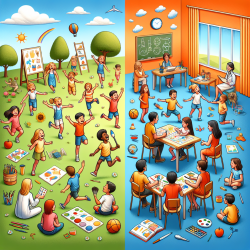When it comes to providing the best education for students with disabilities, understanding educational placement and the Least Restrictive Environment (LRE) is crucial. As a Special Education Director, ensuring that students are placed in settings that meet their needs while promoting inclusion is a top priority.
What is Educational Placement?
Educational placement refers to the setting where your child receives education and services. The goal is to place students in the least restrictive environment, meaning they should be in general education settings as much as possible. This approach ensures that students are taught alongside their typically developing peers to the greatest extent appropriate.
General Education Setting
Consider the following questions to identify the most appropriate education setting for your child:
- Where would your child go to school if they did not need special education services?
- What classes would they attend?
- What activities would they participate in?
General education settings include classrooms, lunchrooms, playgrounds, gyms, libraries, and other locations where children without disabilities are educated. Unless otherwise noted in the IEP, this is where your child should be educated.
Other Possible Settings
While many students spend most of their day in a general education setting, some may require additional services in alternative settings. For example:
- Physical therapy or intensive instruction might be provided inside or outside the general education classroom.
- A speech therapist may work with a child on individual language goals within a small reading group during reading time.
- Occupational therapy might be provided outside the general education classroom if special equipment is needed.
Sometimes, the general education setting is not appropriate. In such cases, schools must offer other options, including:
- Special classes
- Special programs
- Home instruction
- Instruction in hospitals and institutions
Decision-Making Process
The IEP Team, which includes parents, decides where the child spends their time. This team uses the child's evaluation data to determine the most suitable placement. Placement decisions are discussed and written into the IEP at least annually.
Notification and Disagreement
Parents are informed about their child's placement before the IEP becomes effective. The notice includes:
- Reasons for the decision
- Evaluation methods used
- Other options considered
If you disagree with the placement decision, it's important to document your concerns and discuss them with your special education teacher or administrator.
For more information, please follow this link.










